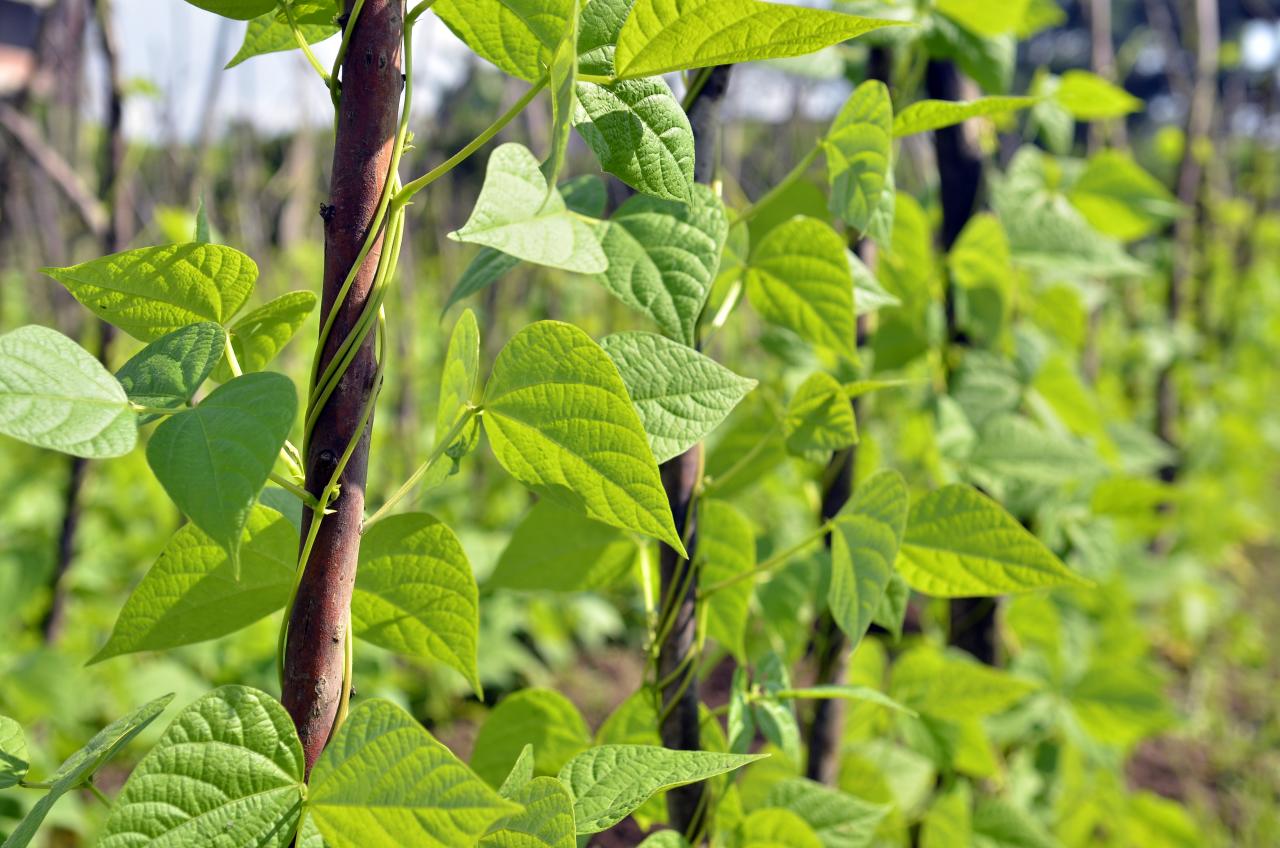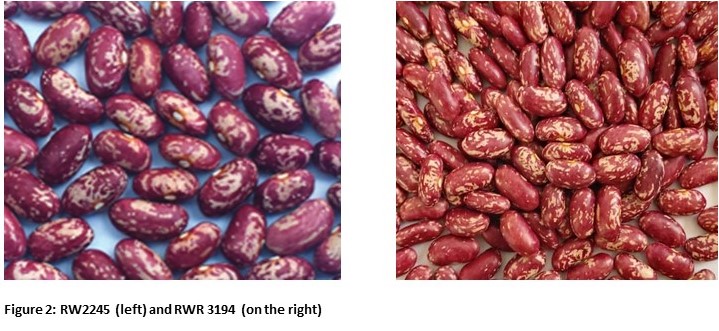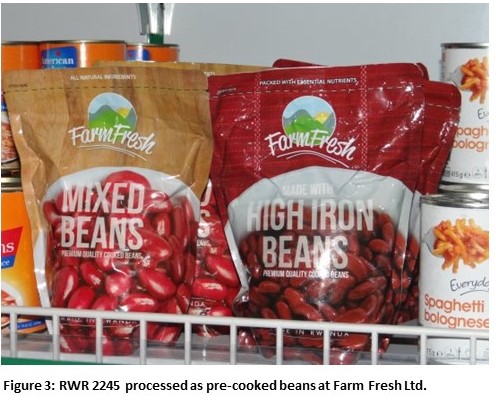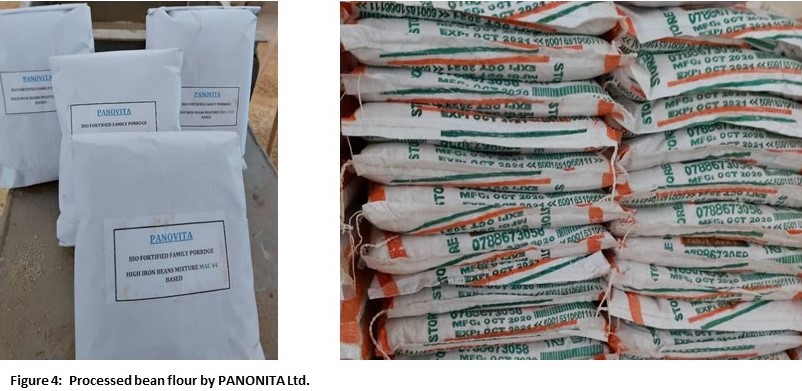Annuarite Uwera, Eileen Nchanji, Clare Mukankusi, and Patricia Onyango
Participatory plant breeding is not new in Rwanda. Its history can be traced between 1988 to 1990 when local experts drawn from the pool of older women carried out the process (Sperling 1992; Sperling et al. 1993). On-farm results demonstrated farmers’ ability to select the best cultivars for their home plots. Between 1990 to 1993, women experts were selected to represent the interests of three different local groups (farmers’ research groups backed by non-governmental organizations (NGOs), independent research-oriented farmers, and different groups of farmers selected from a commune to increase adoption at the community level. The breeding program in Rwanda was definitely set up with the farmer in mind.
Farmers select varieties from the Rwanda Agriculture and Animal Resources Development Board (RAB) bean research station because they are high-yielding, the market demanded, highly nutritious, resistant, or tolerant to multiple abiotic and biotic production constraints. Women and men, farmers’ participation in the breeding process is mandatory as it influences and orients breeders on the most preferred varieties. The process is quite interesting; for example, prior to variety release, breeders ensure that the varieties marked for release have the traits that meet both men and women farmers’ choices, and in recent times other bean value chain actors in the Rwanda Bean Alliance and Innovative Platforms.
We share how gender and nutrition are integrated in the Rwanda breeding program amidst changing climate and market dynamics while focussing on the clients’ needs. Between 2010 and 2012, ten (10) High Iron Beans (HIB) varieties were among the thirty (30) released varieties (Table 1). These bean varieties are spread across the country’s agroecological zones and represent Rwanda’s agrobiodiversity. The variety types are climbing, semi-climbing, and bush beans taking into account market demands, productivity, nutritional values, and the gendered division of labor. The revelation is that even though men and women grow climbing and bush type of beans, men preferred the climbing beans because of their high yields and preference in the market resulting in good profits, while women leaned towards the bush bean types because the labor involved in the production is less intensive; with no staking poles required and less crop management.
Micronutrient deficiencies in women of productive ages and younger children have been noted in various Rwandan studies, and the release of high iron and zinc beans varieties was a welcome bean research advancement to address these deficiencies in smallholder farming households in the country.
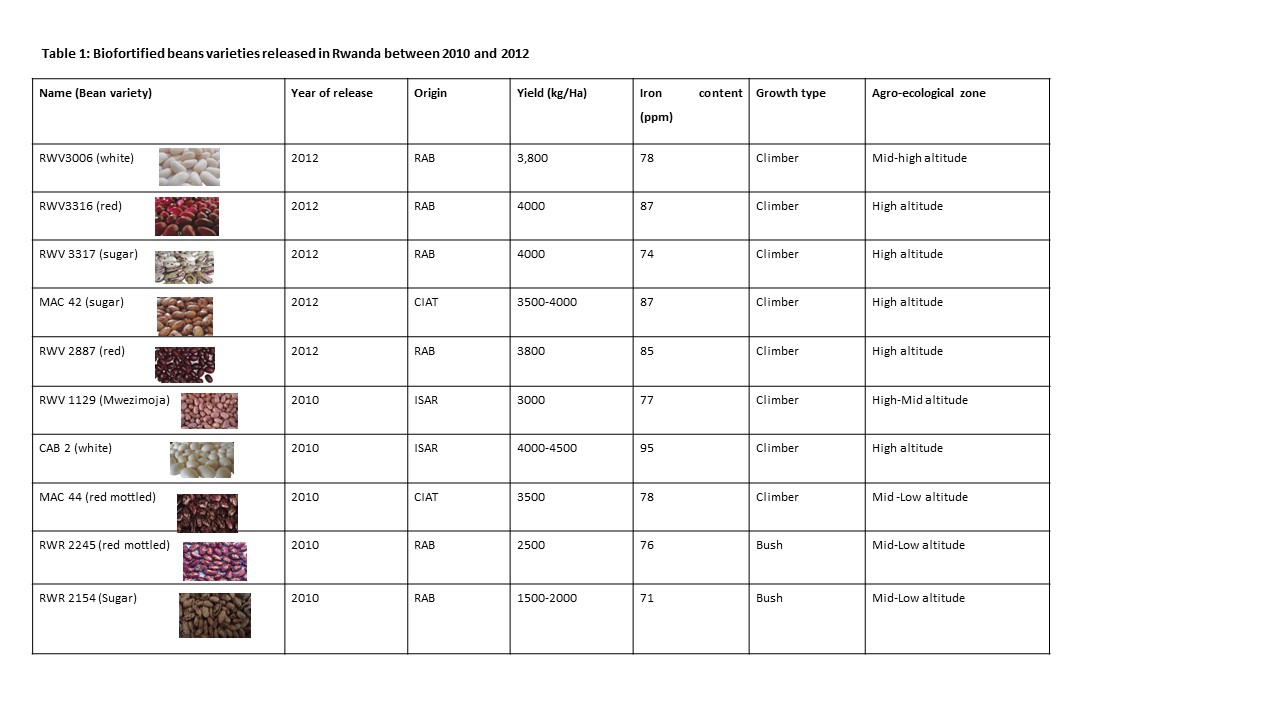 From the listed bean varieties, RWR 2245 – a red mottled bush bean type was released in 2010. It was highly preferred by both men and women because of its high yield, adaptability to low soil fertility, early maturing (about 87days), tolerance to drought, the large-seeded, market demanded and delicious taste when cooked. Men loved this variety because it is market preferred, does not lose its color when stored, good processing quality, non-shattering pods when dry. Women, on the other hand, were more attracted to the bean color, it is fast cooking, highly nutritious, tender leaves when cooked as vegetables, and good taste (Figure 1).
From the listed bean varieties, RWR 2245 – a red mottled bush bean type was released in 2010. It was highly preferred by both men and women because of its high yield, adaptability to low soil fertility, early maturing (about 87days), tolerance to drought, the large-seeded, market demanded and delicious taste when cooked. Men loved this variety because it is market preferred, does not lose its color when stored, good processing quality, non-shattering pods when dry. Women, on the other hand, were more attracted to the bean color, it is fast cooking, highly nutritious, tender leaves when cooked as vegetables, and good taste (Figure 1).
RWR 2245 is very popular in Eastern Rwanda, in Nyagatare, Gatsibo, Ngoma, Bugesera, and Kayonza Districts, and Ruhango in the South with a yield ranging between 1000 to 1500kg/ha at farm level.
More men in Nyagatare District are growing RWR 2245 because of its market demand across the neighboring country – Uganda as well as for local markets, while more women grow it in Nyagatare and other districts because of its color, fast cooking, and great taste. The traits that make RWR 2245 a market niche is its red mottled color (red speckled with white) and the fact that it is bio-fortified – high in iron and zinc.
The other bean varieties in the table are less adopted because they cater to a small market. In addition, red mottles are highly demanded in Eastern Rwanda where lots of bean trade happens.
It is time to go back to the drawing board on research because over the past four years, seed multipliers and researchers have reported RWR 2245 to be more susceptible to anthracnose with a decreasing yield of 500 kg/ha. Despite its decrease in yield, farmers are still growing RWR 2245 as the other traits have remained the same.
As a replacement strategy, the Bean program at RAB has developed a new variety with the same basic traits as RWR 2245. This new variety – RWR 3194 will be among some eight varieties lined up for release in 2021 (Figure 2). RWR 3194 is not only high yielding (2,100 kg/ha compared to 2000kg/ha), but it is large seeded with an iron content of between 86-94 ppm compared to 76 ppm in the RWR 2245; It is resistant to Angular Leaf Spot, Anthracnose, Bean Common Mosaic Necrosis Virus, Common Bacterial Blight, Halo blight, Fusarium solani, Pythium spp. Rhizoctonia and Rust. Already women have shown their interest in RWR 3194 because of its seed size, which is slightly bigger than RWR 2245.
Breeding market demanded beans
Bean researchers at RAB and Pan Africa Research Alliance under Alliance of Bioversity International and CIAT are working on breeding better beans for the continent and world at large. The opportunities that are opening up on beans in Rwanda are enormous. The potential of building big businesses out of beans for men, women, and youths is prevalent across Africa. Breeding beans specific to processing is a growing market niche in Rwanda and was influenced by the RWR 2245 variety. Bean value chain actors especially seed producers, processors have brought to the fore feedback on good bean varieties that are highly demanded in the market. RWR 2245 is a variety best suited for pre-cooked beans and bean flour processing.
RAB, in partnership with Farm Fresh Ltd – a bean processor and marketer of pre-cooked beans has worked to identify the ideal variety for pre-cooked beans. Farm Fresh packs two types of precooked beans; high iron and mixed beans in Kigali. The pre-cooked beans are sold to both low and middle-income consumers in retail markets, schools, and institutions across Eastern Africa. These beans are found on supermarket shelves in Kenya currently in Figure 3.
PANOVITA Ltd. is another bean processing company in Rwanda (Figure 4). They mill bean flour from the RWR 2245 variety. Their products can be found in the retail market (supermarkets) and wholesale markets (schools and refugees’ camps). Consumers targeted with the bean flour are mostly pregnant women, lactating mothers, and children under five. Currently, the flour is popularly distributed in Rwanda and the demand is growing. PANOVITA ltd is looking into expanding both processing unit and market for the flour out of Rwanda.

